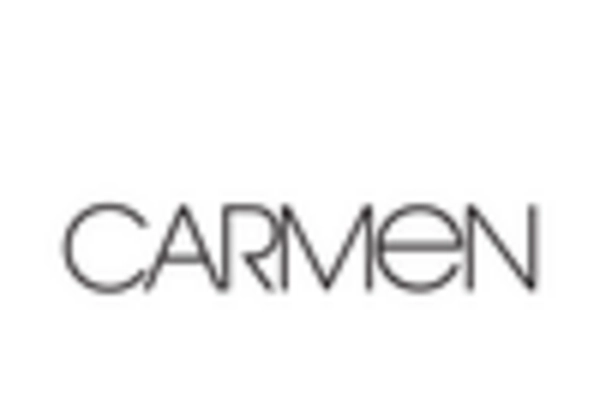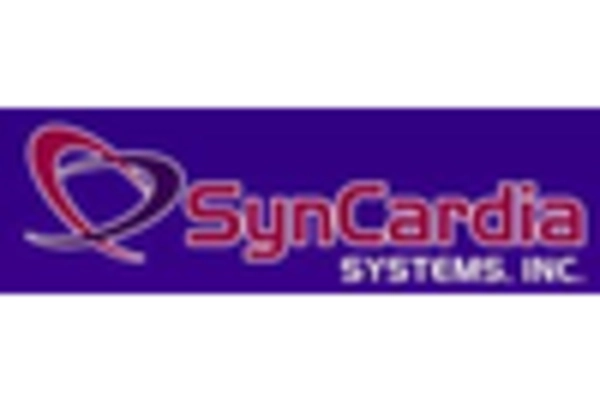Increased Healthcare Expenditure
The rising healthcare expenditure in the US is a significant driver for the artificial heart market. With healthcare spending projected to reach $6 trillion by 2027, there is a growing emphasis on advanced medical technologies, including artificial hearts. This increase in spending is partly due to the aging population and the rising incidence of chronic diseases. The artificial heart market stands to benefit from this trend, as healthcare providers seek to invest in cutting-edge solutions that improve patient outcomes. Furthermore, the expansion of insurance coverage for advanced cardiac devices is likely to enhance accessibility, thereby driving market growth. As a result, the artificial heart market may see a surge in demand as more patients gain access to these life-saving technologies.
Supportive Regulatory Environment
A supportive regulatory environment is fostering growth in the artificial heart market. The US Food and Drug Administration (FDA) has streamlined the approval process for innovative cardiac devices, which encourages manufacturers to bring new products to market more quickly. This regulatory support is crucial for the artificial heart market, as it reduces the time and cost associated with product development. As of 2025, the FDA has approved several new artificial heart models, which has expanded treatment options for patients. This proactive approach by regulatory bodies is likely to stimulate competition and innovation within the market, ultimately benefiting patients. The artificial heart market may continue to thrive as regulatory frameworks evolve to support advancements in cardiac technology.
Rising Incidence of Cardiovascular Diseases
The increasing prevalence of cardiovascular diseases in the US is a primary driver for the artificial heart market. According to the American Heart Association, cardiovascular diseases account for approximately 1 in every 4 deaths in the US. This alarming statistic highlights the urgent need for advanced treatment options, including artificial hearts. As the population ages and lifestyle-related health issues become more common, the demand for artificial heart solutions is expected to rise. The artificial heart market is likely to experience substantial growth, with projections indicating a market value exceeding $3 billion by 2027. This trend underscores the critical role that artificial hearts will play in addressing the healthcare challenges posed by cardiovascular diseases.
Technological Innovations in Cardiac Devices
Technological advancements in cardiac devices are significantly influencing the artificial heart market. Innovations such as miniaturization, improved biocompatibility, and enhanced battery life are making artificial hearts more viable for patients. The integration of smart technology, including remote monitoring capabilities, is also enhancing patient outcomes and satisfaction. As of 2025, the artificial heart market is projected to grow at a CAGR of around 15%, driven by these technological innovations. Companies are investing heavily in research and development to create next-generation devices that offer better performance and longevity. This focus on innovation is likely to attract more patients and healthcare providers to consider artificial hearts as a viable treatment option.
Growing Awareness and Acceptance of Artificial Hearts
There is a notable increase in awareness and acceptance of artificial hearts among patients and healthcare professionals. Educational initiatives and advocacy groups are playing a crucial role in informing the public about the benefits and advancements in artificial heart technology. This growing awareness is likely to lead to higher patient acceptance rates, which is essential for the artificial heart market. As of 2025, surveys indicate that approximately 70% of patients are open to considering artificial hearts as a treatment option for severe heart failure. This shift in perception is expected to drive demand, as more patients seek out these innovative solutions. The artificial heart market may experience accelerated growth as acceptance continues to rise.

















Leave a Comment